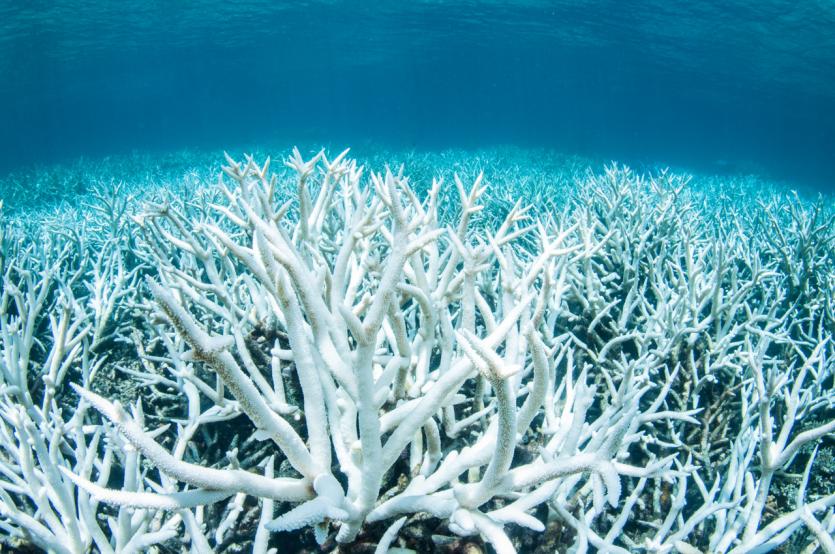Bleached coral near Port Douglas, Australia. Photo:Greenpeace
By Patryk Krych | The World Daily | MAY 19th 2021
Scientists have recently launched an all-new system capable of directly tracking the bleaching of coral reefs in near real-time, in order to better keep an eye over the progress caused by global heating and climate change.
Coral bleaching is one of the biggest issues facing marine life at the moment, perpetuated by a changing climate and heating waters. When the waters around corals become too warm, the corals will begin to expel an algae called ‘zooxanthellae’ which lives within their tissues and causes them to entirely lose their colour. This sets them on a path towards increased stress and a likely sooner death.
Coral reefs are extremely important when it comes to marine ecosystems, serving as a home to at least a quarter of all oceanic life. In this sense they are also vital for the livelihoods and survival of millions of people, particularly in coastal communities where fishing is heavily relied on.
Having been funded by Vulcan Inc and subsequently launched by Allen Coral Atlas after a four-year development period, this new tool will be able to tell anyone whether or not a collection of reefs that have been placed under heat stress are at risk of bleaching. Thus, the full extent of the bleaching issue can be properly assessed on a global scale, and places where corals are still surviving can also be found.
This has been considered a necessary endeavour, as according to projections written up by the United Nations climate assessment, even if the missions of the Paris Climate Accords has been successfully met and the global temperature rises have been limited to 1.5 degrees Celsius, between 70%-90% of coral reefs are still likely to die off.
The tool’s long development has already seen two trial periods of testing according to the managing director of the Allen Coral Atlas, Professor Greg Asner. The first trail was in French Polynesia in early 2019 during a severe outbreak of bleaching, and the second trial had come later that year during a much milder outbreak in Hawaii.






